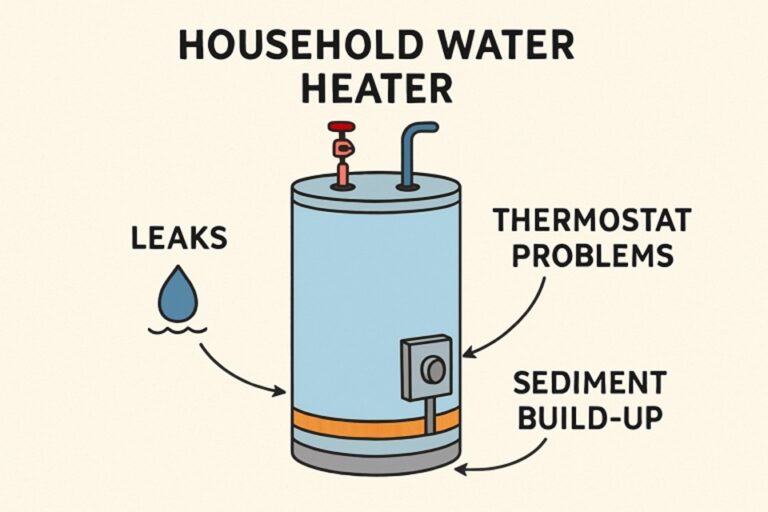A sturdy and well-maintained roof is one of the most vital components of a safe home, serving as your first line of defense against wind, rain, snow, sun, and debris. Unfortunately, homeowners often overlook their roofs since the issues that develop can be subtle, invisible from the ground, or hidden under layers of shingles and flashing. Without regular checkups, minor defects—like loose shingles, cracked tiles, or worn seals—can quickly turn into major, expensive repairs that compromise not just the roof, but the entire structure beneath it. That’s why routine inspections by a professional roofer are essential for identifying early warning signs and preventing problems from escalating into emergencies.
Regular inspections not only shield you from unexpected, high-cost repairs but also preserve the structural integrity and long-term value of your property. Proactive roof care gives homeowners peace of mind, ensuring that the building envelope stays secure against all types of weather and age-related wear. It’s much easier and less expensive to address problems while they’re small, preventing stress and costly inconvenience down the road.
Neglecting regular roof inspections often results in missed early signs of deterioration, such as cracked shingles, subtle leaks, or aging sealants that can easily worsen with every rainstorm or freeze-thaw cycle. Addressing these concerns quickly can keep your home not only safe from water intrusion and weather damage, but also help avoid substantial repair bills that disrupt your finances and routine.
For homeowners facing older roofs or storm damage, professional roofing restoration services can be invaluable for both targeted repairs and comprehensive upgrades. Restoration not only fixes visible damage but also reinforces the underlying layers for extended protection and durability.
Early Detection Of Issues
Regular roof inspections can uncover problems such as missing shingles, loose flashing, or minor water intrusion before they affect the structure below. Faults that appear insignificant, like a single cracked tile or a loose nail, can deteriorate rapidly under severe weather conditions. Even a small hole or gap in the roof can lead to major leaks, especially during heavy rain or snow, allowing water to seep into insulation and wood below. By catching these faults early, you can implement affordable fixes and limit damage to insulation, drywall, and support beams. Early intervention is key to preventing more extensive and expensive repairs down the line. Detecting and correcting faults at this stage is much simpler—and cheaper—than repairing widespread water staining, structural rot, or mold remediation.
Extending Roof Lifespan
Routine maintenance substantially increases the life expectancy of your roofing material, which is often one of the most expensive components of your home. Issues such as granule loss on asphalt shingles, minor wind damage, lifted tiles, or clogged gutters—when addressed promptly—help roofs last their full expected lifespan, and sometimes longer. Skipping inspections allows these smaller issues to accumulate, which can drastically shorten the roof’s lifespan. The National Roof Certification and Inspection Association (NRCIA) notes that proactive care can add 5 to 10 years to a roof’s lifespan, resulting in fewer full replacements. This translates directly into thousands of dollars in savings over the lifetime of your home and far less disruption to your household.
Preventing Water Damage
Unchecked, even the smallest roof vulnerability can let in moisture, triggering a chain reaction of wood rot, mold growth, and insulation failure that undermines your entire property. Water damage is not just costly to repair; it can also compromise the health and stability of your home. Damp materials can encourage mold growth, which can exacerbate allergies and respiratory issues for you and your family. Professional inspections are designed to spot weak points, such as compromised flashing or poorly sealed valleys, before they become pathways for moisture, minimizing the risk of leaks and long-term deterioration. Even areas around chimneys, skylights, and roof edges require special attention, as they are common points of water ingress.
Enhancing Energy Efficiency
A well-maintained roof acts as a thermal shield, keeping your indoor environment comfortable and reducing your energy expenditures year-round. Warped or missing shingles, leaks, gaps, or inadequate attic ventilation and insulation can cause abrupt spikes in your heating or cooling bills, making your HVAC system work overtime and wasting energy. Regular checkups ensure all components of your roof—shingles, vent pipes, underlayment, and insulation—are functioning together to optimize a home’s energy performance, lowering monthly utility expenses. In the long run, maintaining energy efficiency boosts both your family’s comfort and your budget.
Avoiding Emergency Repairs
Emergency roof repairs, whether from sudden weather events or unexpected failures, are almost always more expensive and stressful than planned maintenance. These fixes often require after-hours labor, rush shipping for specialty materials, and may even be delayed by ongoing poor weather, all of which increase both the financial and emotional burden for homeowners. In contrast, scheduling regular inspections allows you to plan for minor repairs on your timetable, helping avoid both panic and inflated costs. By catching problems before they become emergencies, you can ensure repairs are performed in safer working conditions and at a lower overall cost.
Preserving Home Value
Roofs in good condition significantly boost your home’s curb appeal and market value, assuring potential buyers your property is move-in ready and well cared for. In fact, many prospective buyers will shy away from a home with obvious roof damage, as they anticipate additional expenses after purchase and may lower their offer or withdraw altogether. Routine inspections and repairs ensure your property remains desirable and competitive with others in the market, offering reassurance that the home has been well-maintained from top to bottom. Inspections help provide sellers with documentation of recent care, which can further speed up the selling process and justify a higher asking price.
Recommended Inspection Schedule
Professional organizations such as the National Roofing Contractors Association recommend at least one roof inspection each year, preferably in the spring or fall, when the weather is more moderate and seasonal damage can be assessed more easily. Homes located in areas with harsh winters, frequent storms, or extreme heat may need biannual inspections: once after winter snow or freezing cycles and again before hurricane or storm season begins.
It’s also strongly recommended to schedule extra checkups after major weather events, which can damage even brand-new roofs by dislodging shingles or breaking seals. High winds, heavy hail, or falling debris can all cause hidden structural issues that worsen over time if left unchecked. Early detection, especially after storms, can keep repair costs manageable and prevent bigger headaches down the road.
Conclusion
Proactive, scheduled roof inspections are among the smartest investments you can make in your home. By detecting issues early, you’ll avoid costly repairs, extend your roof’s lifespan, save on energy costs, and maintain your property’s value. Whether your roof is brand new or decades old, make routine roof assessments a part of your home maintenance calendar to ensure years of protection and comfort for your family. In doing so, you help safeguard not just your house, but also your peace of mind and financial security.










